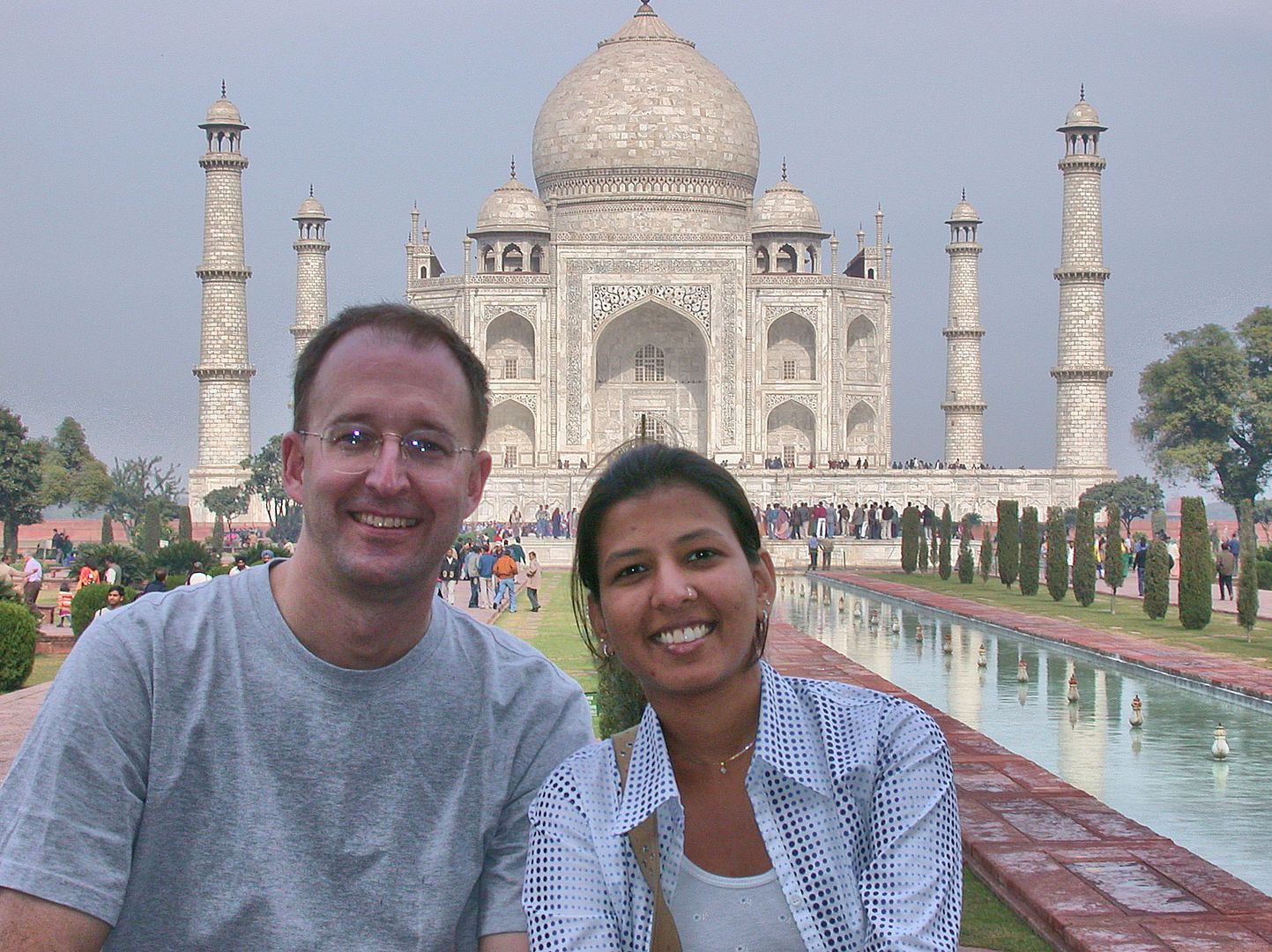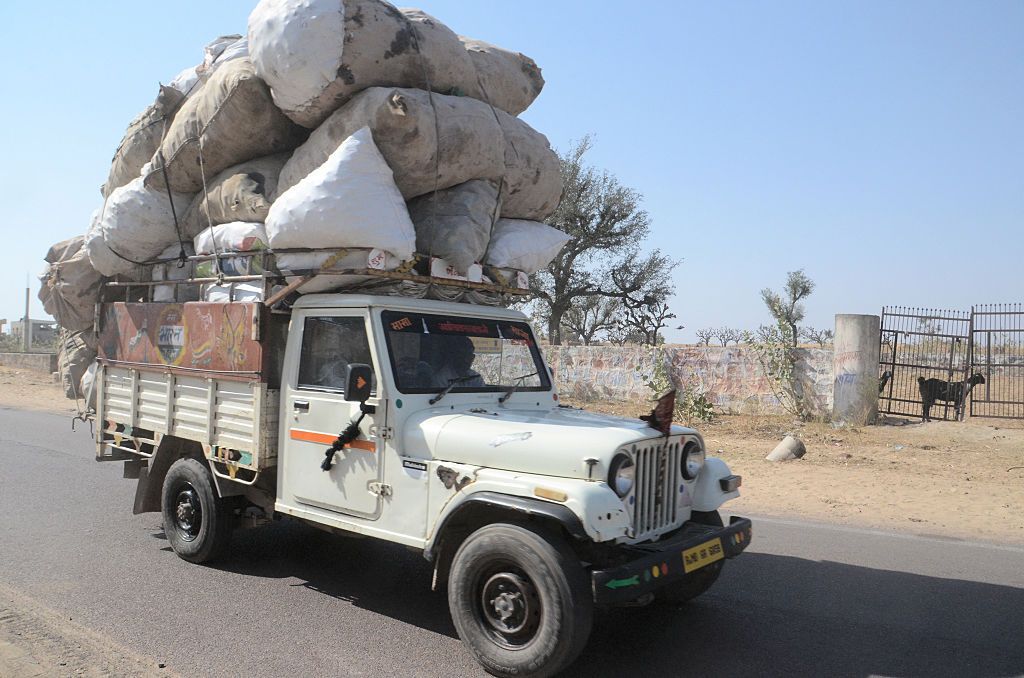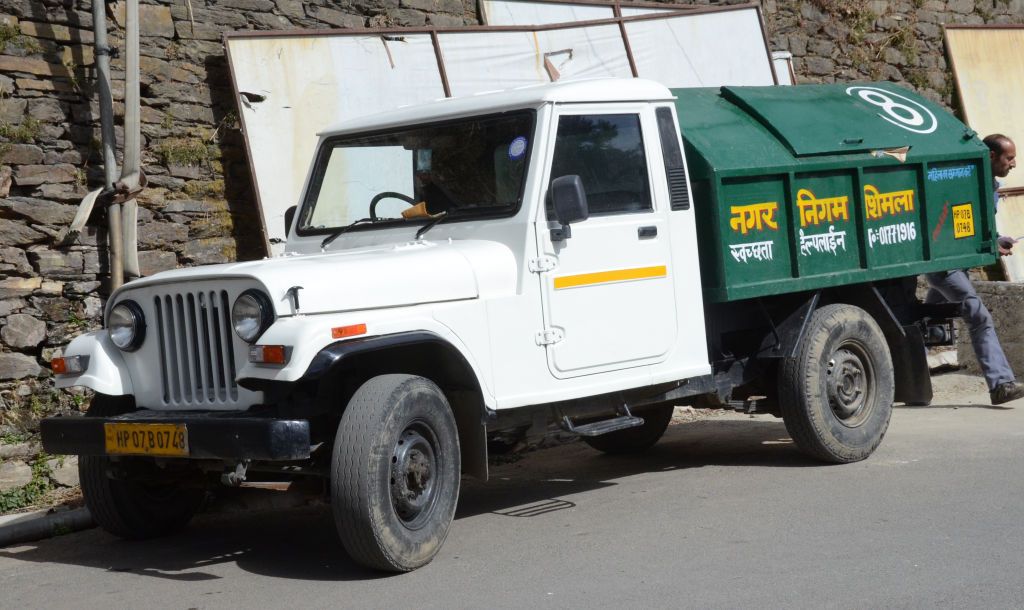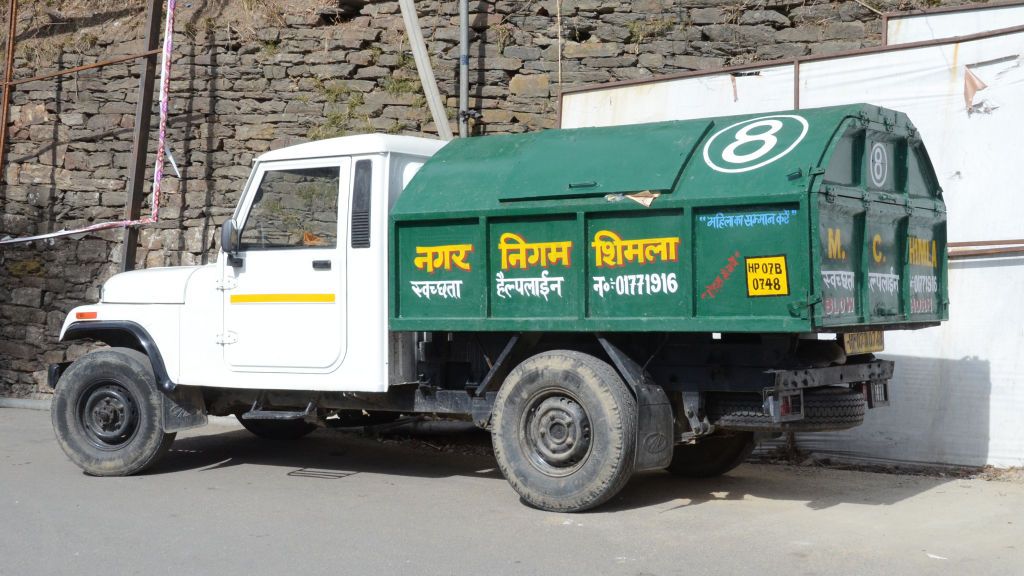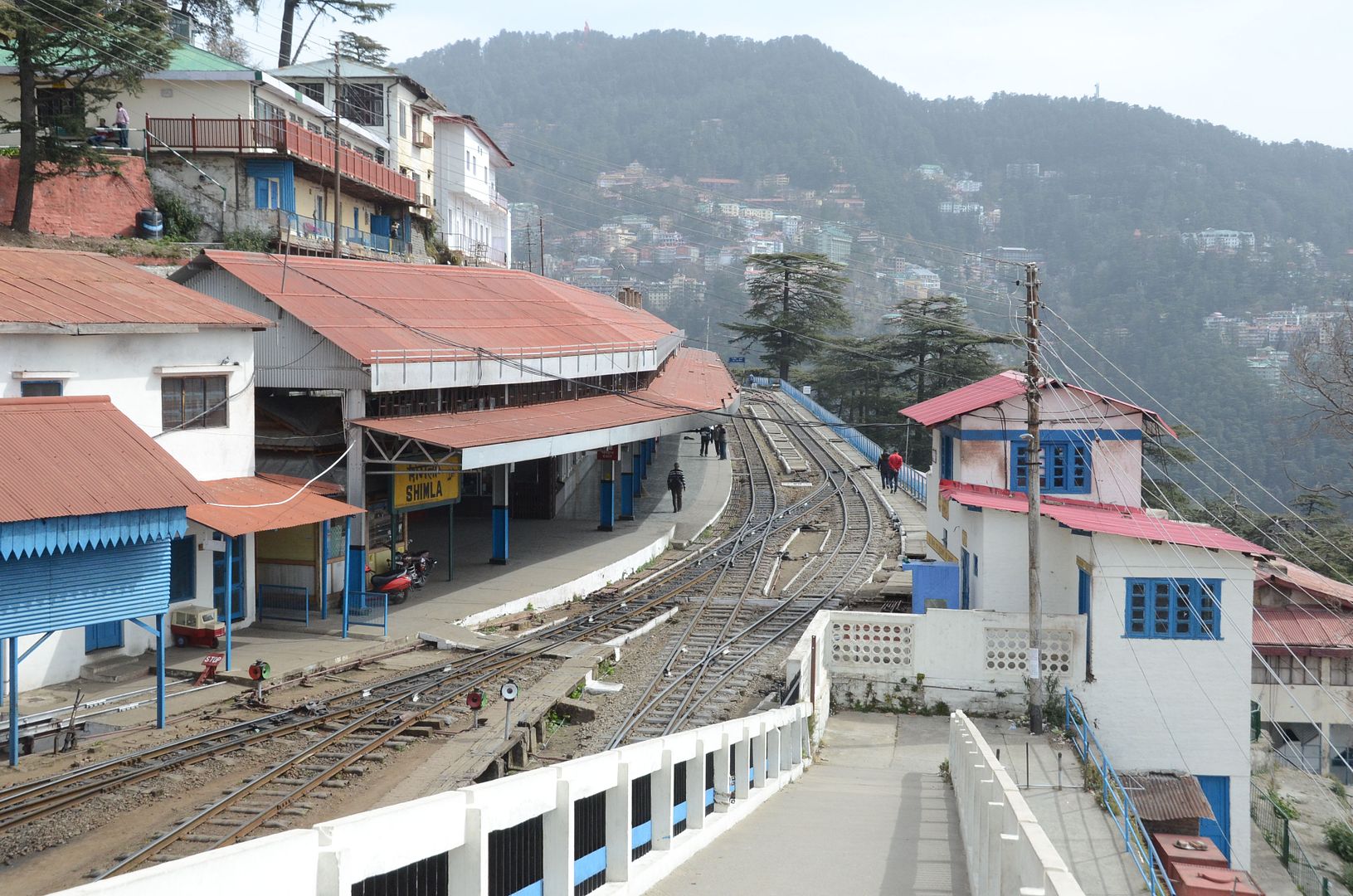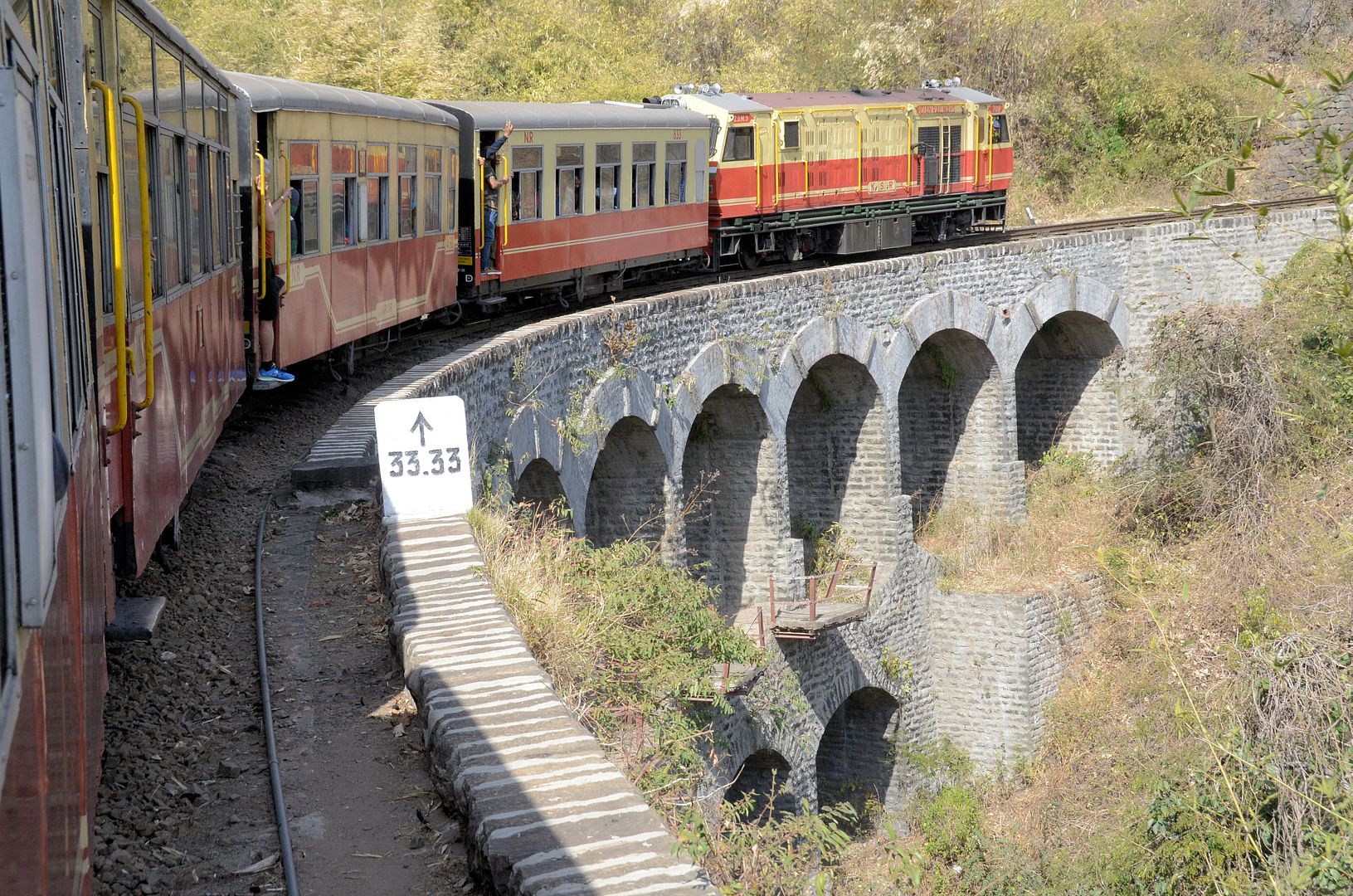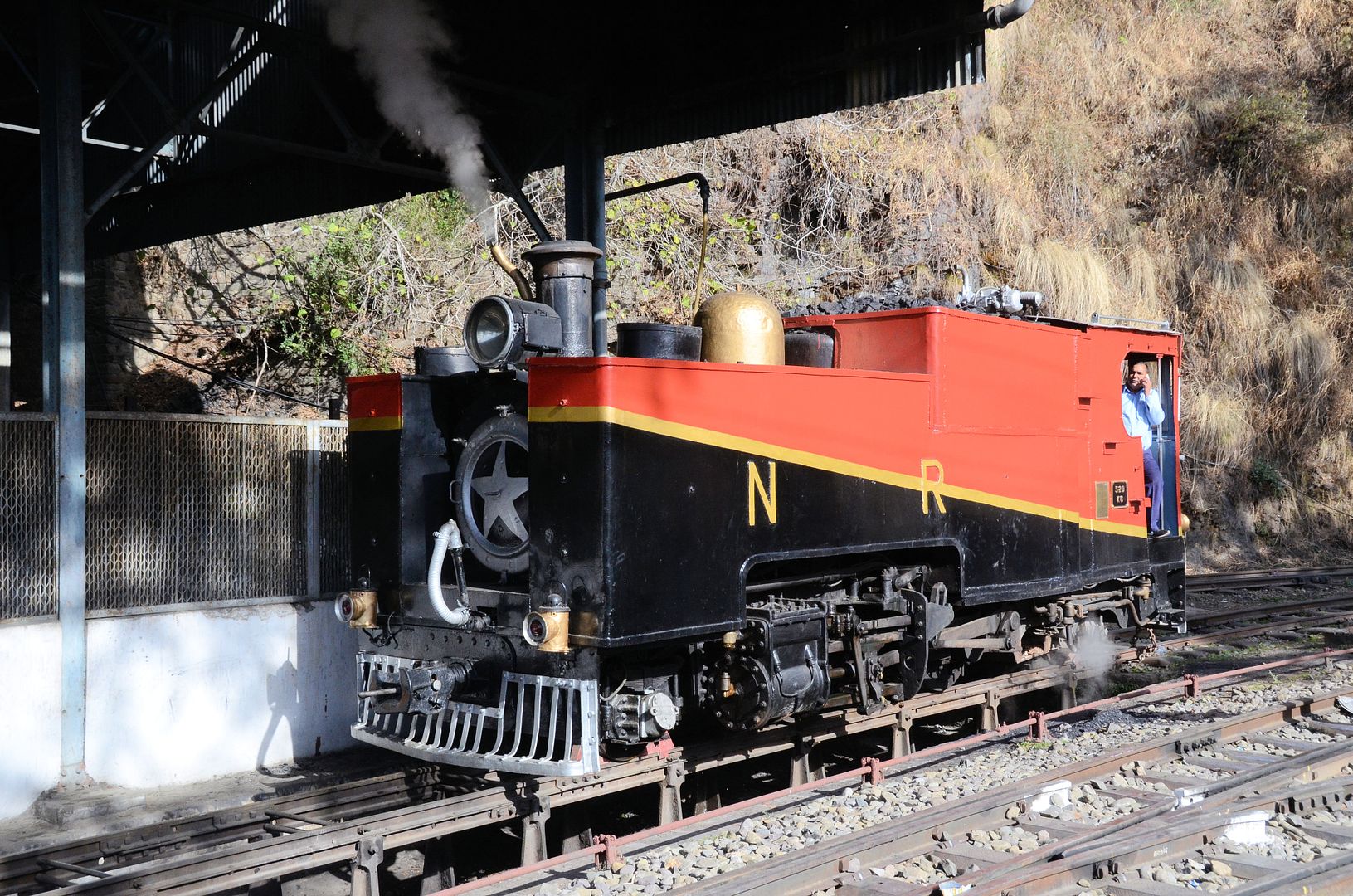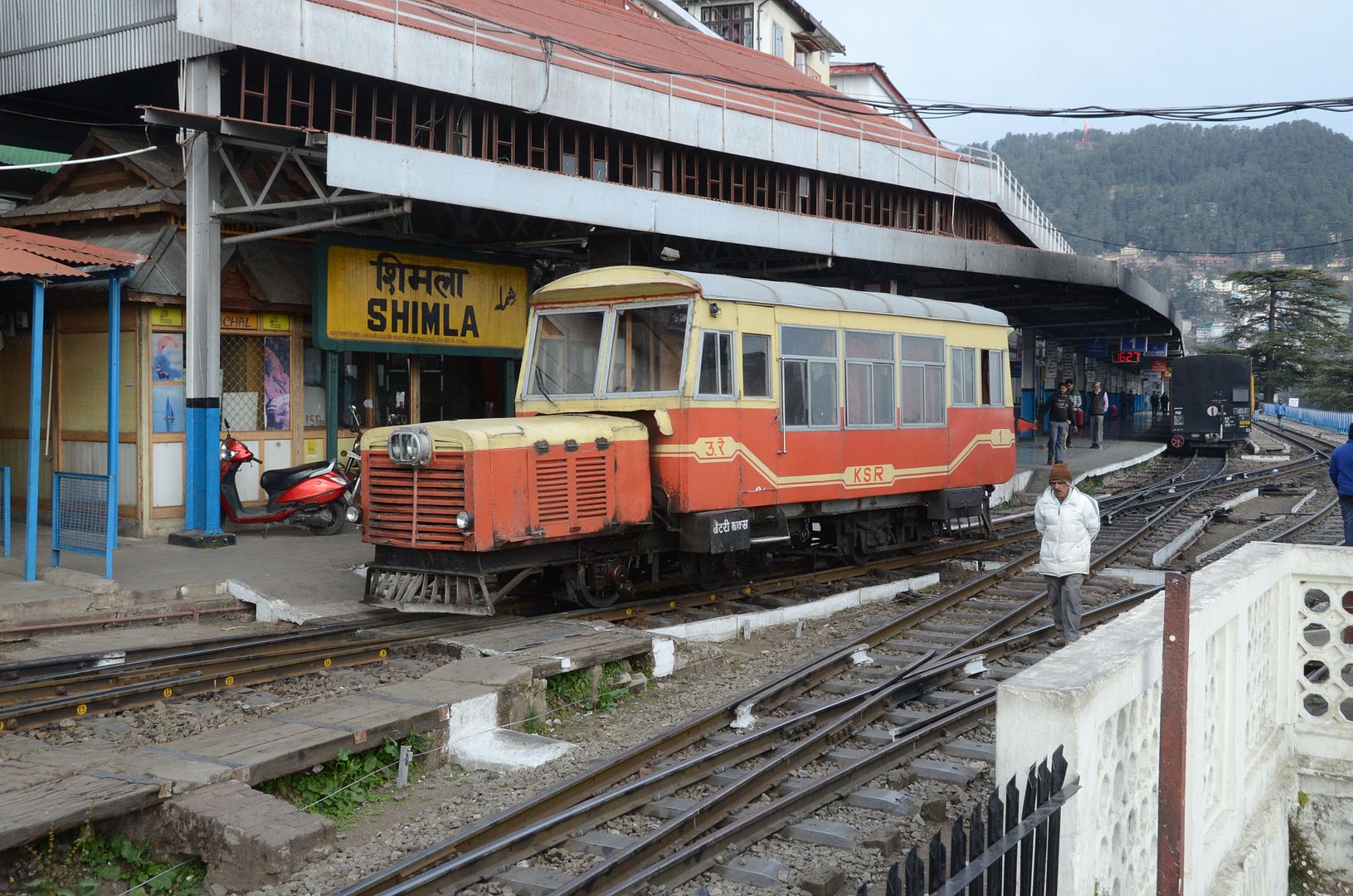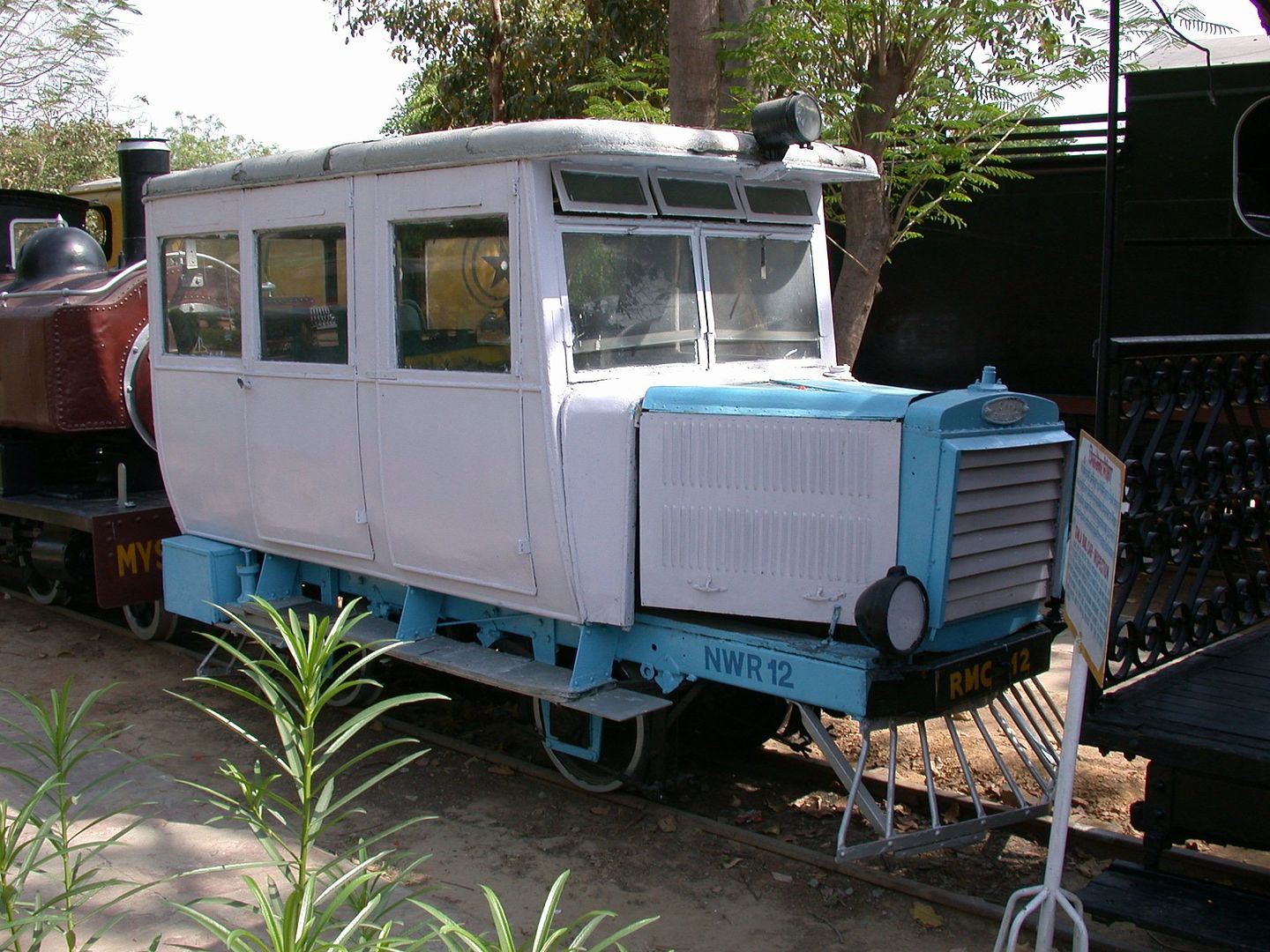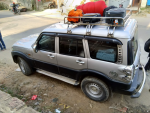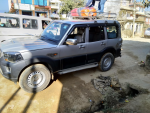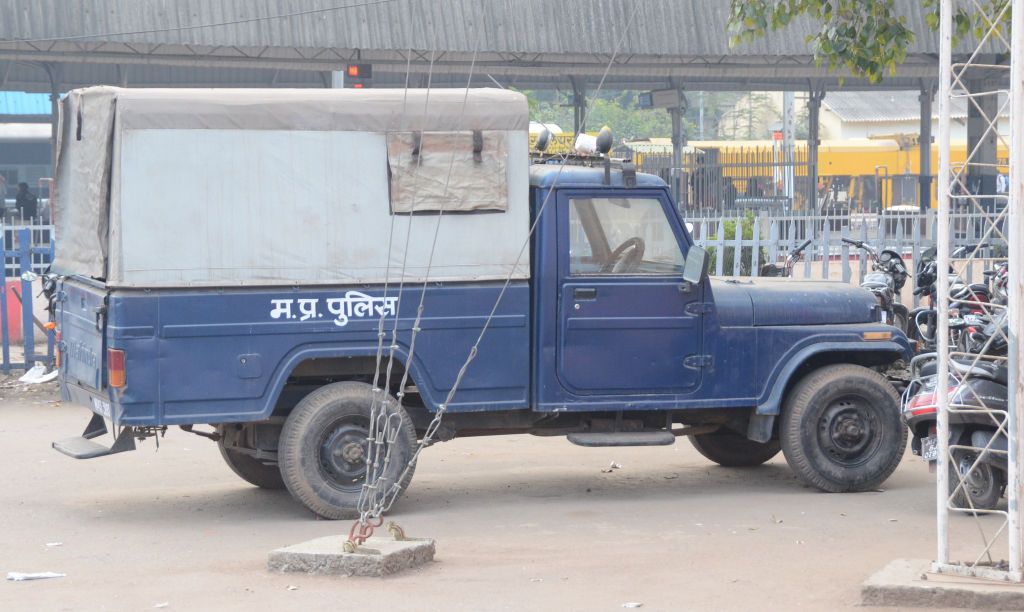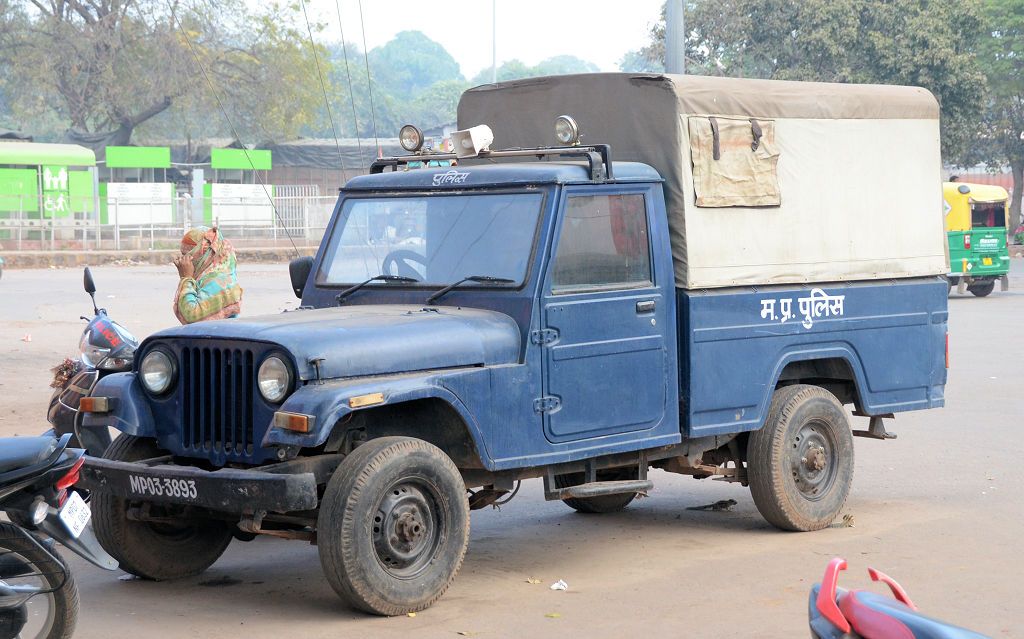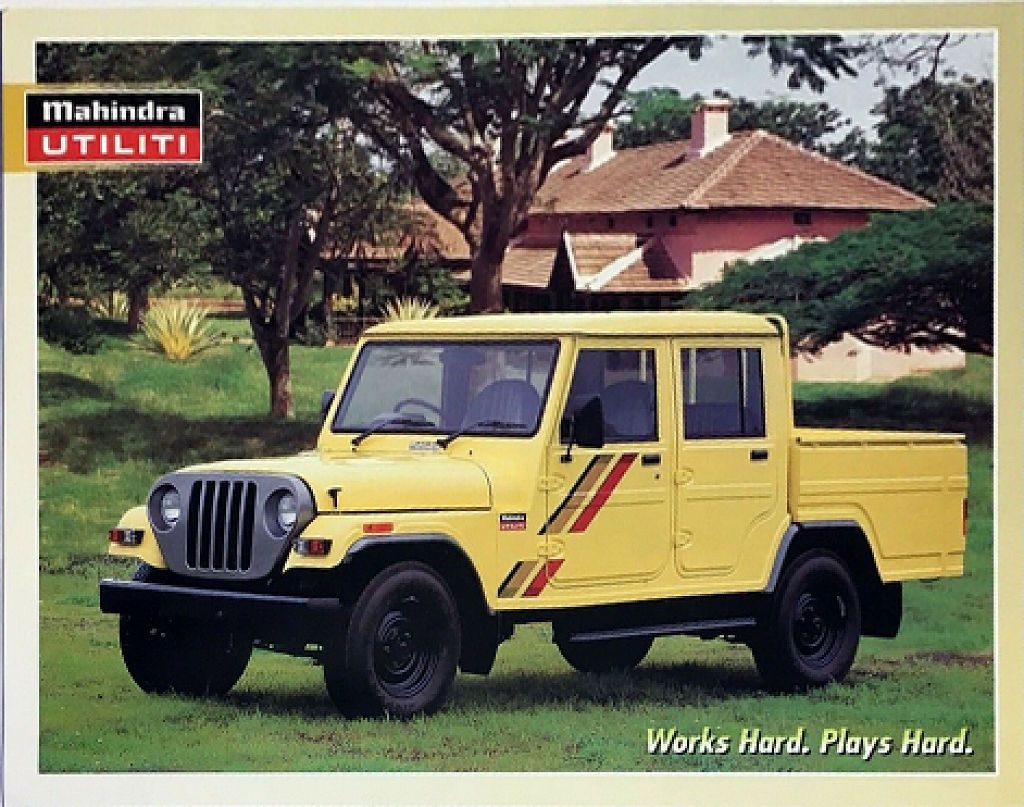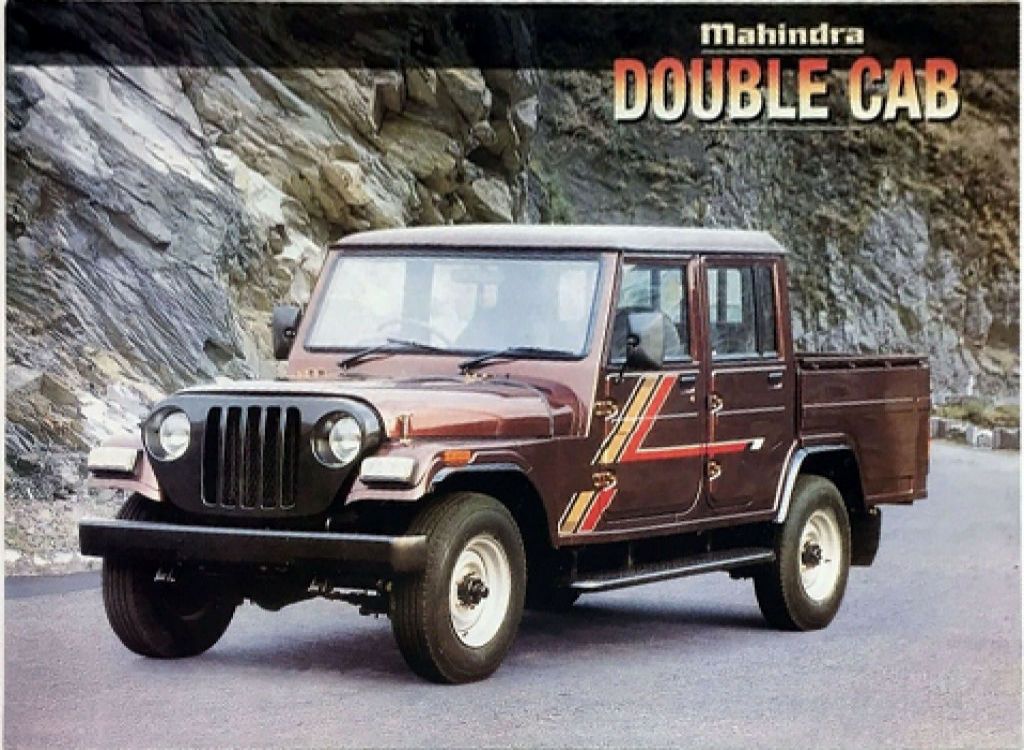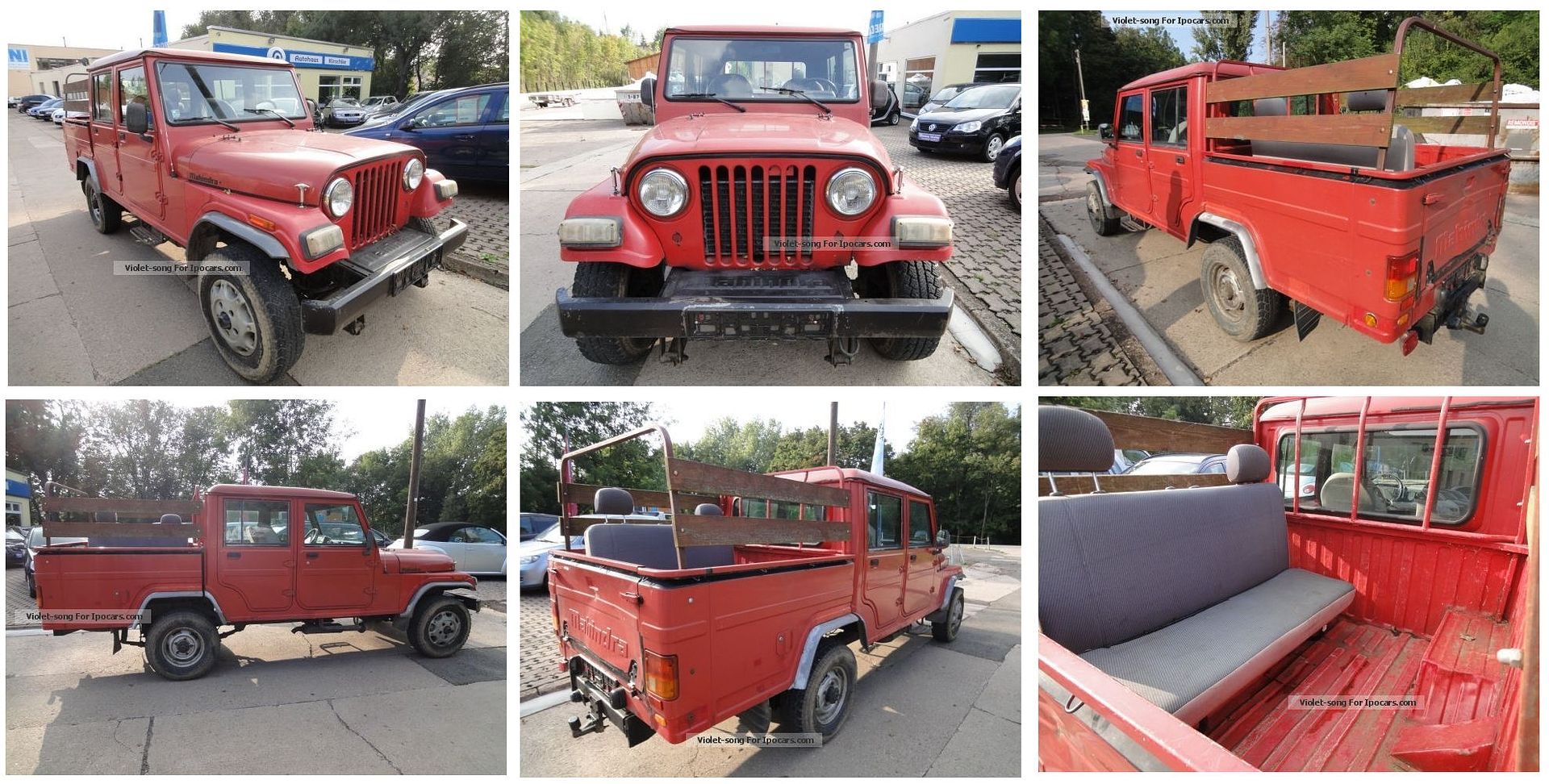In the U.S. we'd call this a "garbage truck". This PikUp is in trash collection service in the town of Simla in the Himalayan foothills. A larger vehicle for this service wouldn't be able to negotiate the twists and turns in the town, which clings to the slopes of the mountains and has many narrow, switchbacked roads.
I don't think you can make it out in the photo, but the trash body tilts to dump the trash out of the door on the back, so I suppose that technically makes it a dump truck.
Warning: background info in India coming up...
Some background on Simla: Simla was once the summer capital of the British Raj; the Brits, finding Delhi too hot in the summer, moved their capital to Simla for the hot months. Initially the move was done my oxcart, but starting in 1898 they built a narrow gauge railway from the plains at Kalka to Simla.
I did a magazine article on the Kalka-Simla Railway in 2018, here are a few photos from the article...
The town of Simla is at an elevation of 7,467' and the railway station there is perched on the side of the mountain:
The railway winds around the ghaattii (gulches or valleys) up to Simla and required 107 tunnels and 869 bridges to reach Simla. Labor being relatively inexpensive in India and stone being available, most of the bridges are hand-built stone arch bridges. This is a typical bridge:
Today the trains are powered by diesel locomotives, but special trains are sometimes powered by steam; this 1905-built steam tank engine was steaming up at the Simla station one day when I was there:
Maybe even more interesting are the rail motor cars that still run on the route. BTW the more common spelling of the town name is Simla, but Shimla as seen on the sign at the station, is also used.
This is an earlier rail motor now at the National Railway Museum in New Delhi.
For anyone interested in trains and railway history, the museum in Delhi is well worth a half day if you're in town.
A drawing of the early rail motor car that I did for a different magazine article:
